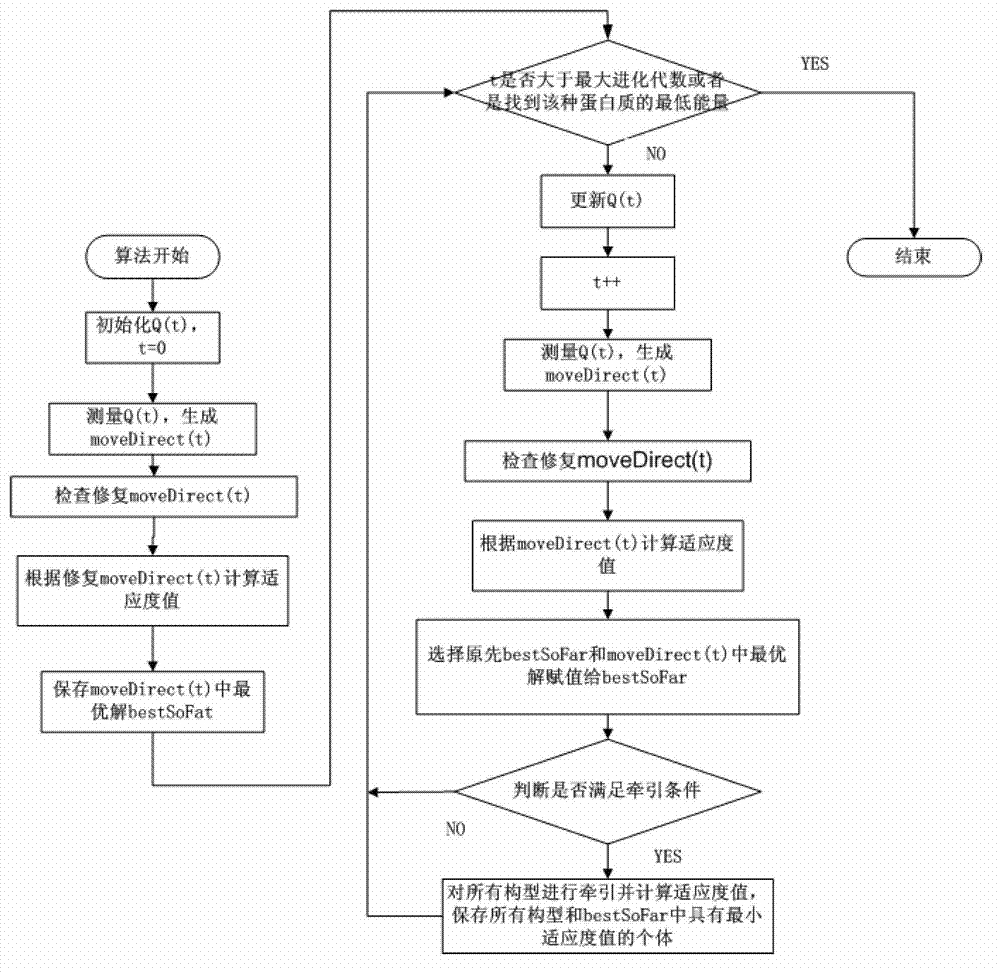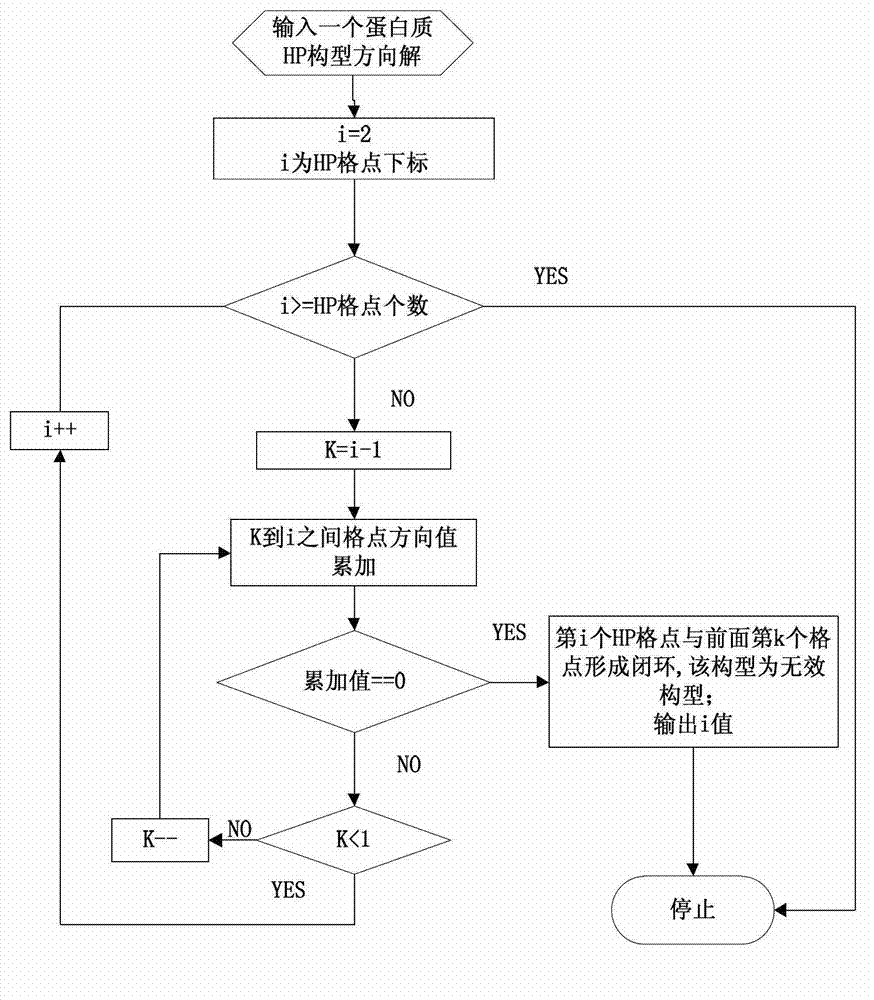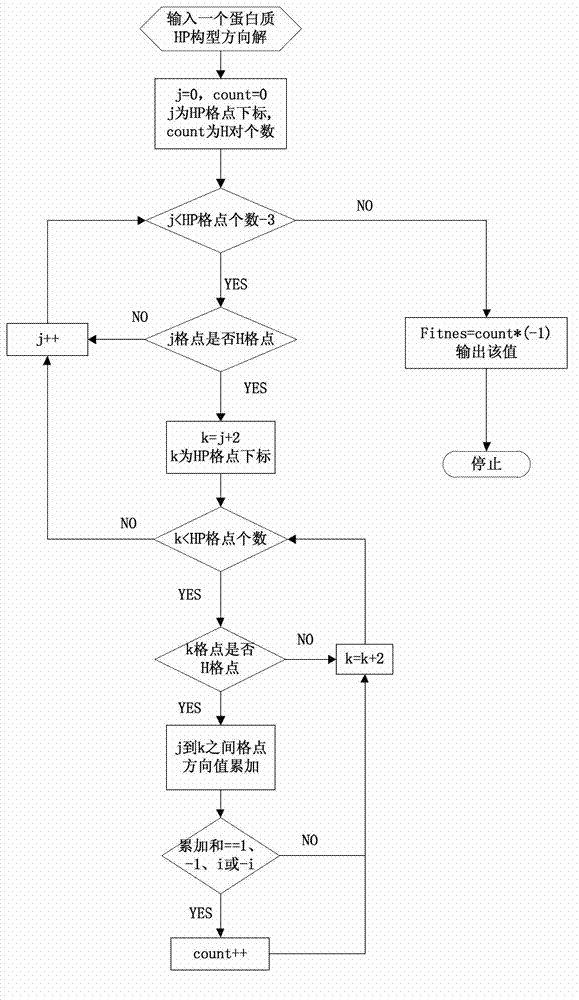Protein high polymer (HP) model calculation method based on variable angular distance quantum evolutionary algorithm (QEA) algorithm
An angular distance, protein technology, applied in the field of biological information, can solve the problems of increased convergence speed, slow convergence speed, unable to obtain optimal solutions, etc., to achieve the effect of improving execution speed
- Summary
- Abstract
- Description
- Claims
- Application Information
AI Technical Summary
Problems solved by technology
Method used
Image
Examples
Embodiment Construction
[0043] Below in conjunction with accompanying drawing, the method for solving the protein HP model based on the variable angular distance QEA algorithm proposed by the present invention is described in detail:
[0044] Such as figure 1 As shown, the present invention is based on the protein HP model solution method of the variable angular distance QEA algorithm, and its execution steps are as follows
[0045] The first step is to initialize the quantum population Q(t), with 2N qubits (N represents the number of amino acids), each qubit is: (That is, |0> and |1> appear with equal probability); at the same time, set the population size to 30.
[0046] The second step is to measure the quantum population Q(t), and generate the direction solution population moveDirect(t). The 2N qubits in the individual are measured to generate binary, and the binary solution is converted into the corresponding direction solution form. The rules are as follows: the direction value corresponding ...
PUM
 Login to View More
Login to View More Abstract
Description
Claims
Application Information
 Login to View More
Login to View More - R&D
- Intellectual Property
- Life Sciences
- Materials
- Tech Scout
- Unparalleled Data Quality
- Higher Quality Content
- 60% Fewer Hallucinations
Browse by: Latest US Patents, China's latest patents, Technical Efficacy Thesaurus, Application Domain, Technology Topic, Popular Technical Reports.
© 2025 PatSnap. All rights reserved.Legal|Privacy policy|Modern Slavery Act Transparency Statement|Sitemap|About US| Contact US: help@patsnap.com



